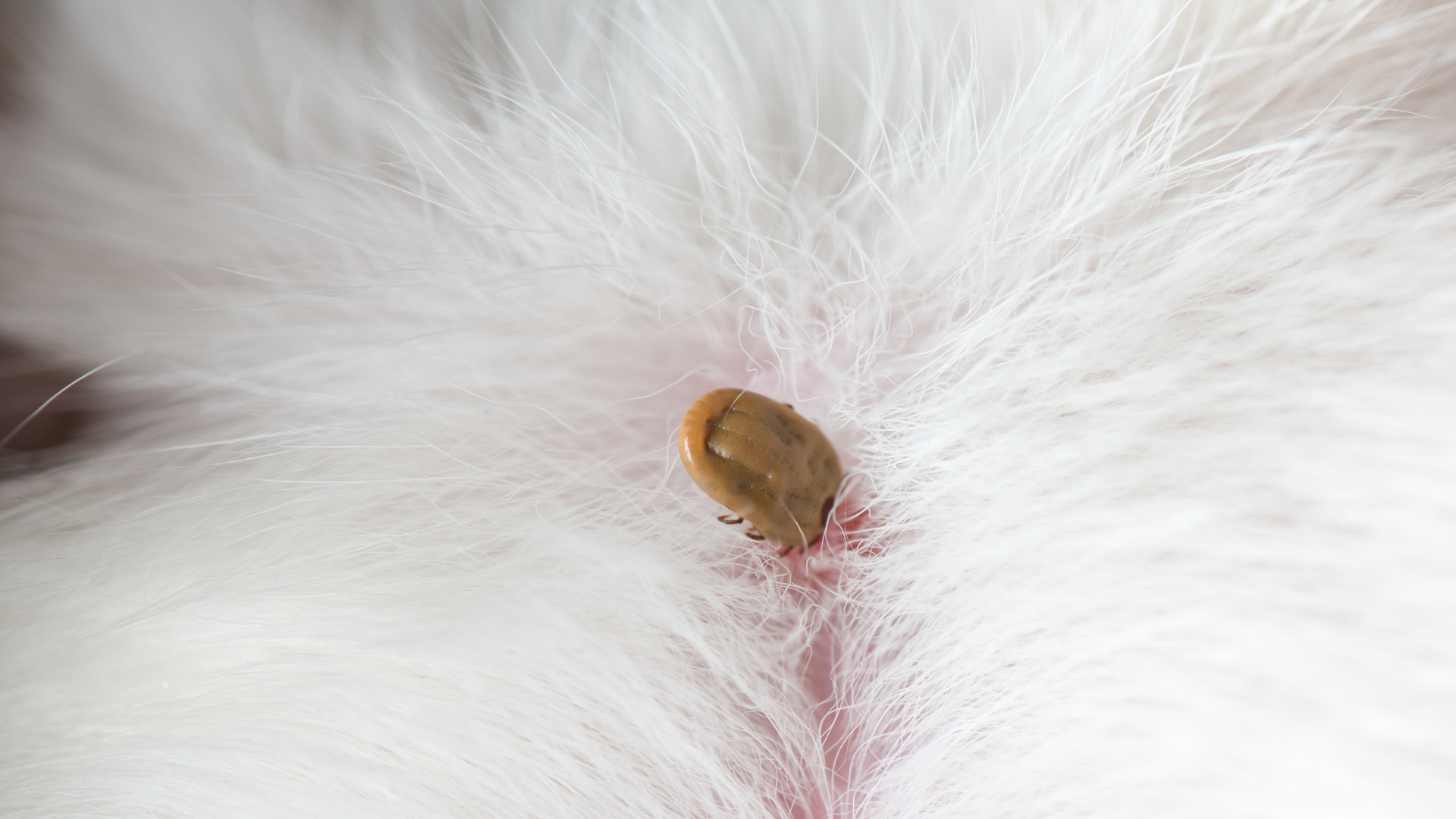What is tick paralysis?
Australia has several different species of tick. The Eastern paralysis tick (Ixodes holocyclus) can cause life threatening paralysis to dogs and cats.
As they burrow their mouthparts into the skin to feed on blood, they inject small amounts of toxic saliva into the pet. This toxin causes weakness and ultimately paralysis. Tick paralysis occurs mostly in tick endemic areas, particularly along Australia’s east coast.
According to the PetSure data obtained over the past five years, tick paralysis cases consistently increase from August with a peak over October, November and December before decreasing again by February. However, while these are peak times, tick paralysis is seen all year-round in tick endemic areas.
Who is affected?
Any breed or age of dog or cat is susceptible to tick paralysis.
Signs of tick paralysis
The signs of tick paralysis can be vague and vary depending on the progression of the paralysis and the individual pet. If you have just found a tick, or a tick crater (the mark left on the skin by the tick) contact your Vet for advice even if your pet seems normal.
The signs of tick paralysis can still develop once the tick has been removed, and usually occur when the tick has been attached for 3 to 4 days.
Signs that your pet may have tick paralysis include:
- Incoordination and weakness, particularly of the hind legs but can progress to all four limbs
- Paralysis
- Noise or difficulty when breathing, coughing, grunting
- Vomiting, gagging, regurgitation, reluctance to eat
- Changes to the pets’ voice
- Changes to the eyes including reduction in the ability to blink, pupils that are different sizes
- Droopy eyelid/s, droopy facial features
Treatment of Tick Paralysis
Tick Antitoxin Serum or TAS needs to be given to the pet as soon as possible. It is important to keep tick paralysis patients calm, so the vet may recommend sedation. It is vital to ensure there are no other ticks on the pet, so vets often shave the pet in order to check for more ticks.
The rest of the treatment is generally dependent on the severity of the signs. Intravenous fluids, antibiotics and other medications may be needed.
When the pet’s breathing is affected, they may need oxygen therapy. In severe cases, mechanical assistance to breathe (ventilation) may be indicated. This is usually done at a specialised veterinary practice with intensive, around the clock care.
How much does it cost to treat?
According to PetSure claims data from the 2022 calendar year, the average claim cost relating to tick paralysis for dogs was $2,402 with the highest claim cost being $53,331.
For cats, the average claim cost relating to tick paralysis was $1,859 and the highest claim cost was $20,348.
Prevention is better than cure
With treatment running into the many thousands, and the life of your fur-baby on the line, when it comes to tick paralysis, prevention is better than cure. There are many excellent products that are long-acting and easy to administer to your pet to repel and kill ticks. In many cases, these products also treat fleas and worms as well. Chat to your vet about the right tick product for your pet.
Avoid bush habitats if possible. The coastal strip of the east coast of Australia, running from far north Queensland to Victoria is where paralysis ticks are located.
Have long-haired pets clipped to make it easier to find ticks and check all pets for ticks every day. Remember, they can be very small. Check every part of pets and if one tick is found, look for others.
If you find a tick on your pet, seek immediate veterinary advice. Your vet may recommend that you remove the tick with a tick remover, tweezers or fingers by gently twisting and plucking.
Is tick paralysis covered by pet insurance?
Tick paralysis may be covered up to the annual tick paralysis sub-limit by Comprehensive Accidental Injury and Illness pet insurance policies, and may be listed under cover for Extended Accident and Major Events policies administered by PetSure (check our brand partners at petsure.gholab.com.au/partners), unless related to a pre-existing condition or exclusion. Refer to your policy documents including a Certificate of Insurance and Product Disclosure Statement for more information on whether this condition is covered under your policy..
References
- Australian Paralysis Tick Advisory Panel, 2019 TICK PARALYSIS OF DOGS AND CATS, An Updated Guide to Diagnosis, Management, Treatment and Prevention, 2020 update, accessed on 18/11/20 available at https://www.animalhealthacademy.com.au/pluginfile.php/9616/mod_resource/content/3/FINALTick_Guidelines_Technical_Brochure_LR_a.pdf
*PetSure claims data, not indexed based on rising number of pets
Pet insurance can help by covering a portion of the eligible vet bill if the unexpected happens. Because it is difficult to predict the costs of veterinary care, it can help to have measures in place to help prepare for the unexpected. Check out our partner network and explore our policy tools to find a pet insurance policy.
Not all conditions or items are covered by Pet Insurance. Refer to the applicable Product Disclosure Statement for information about coverage and exclusions.








